
Become a member
Join today and help protect nature, beauty and history – for everyone, for ever. Enjoy access to more than 500 places with National Trust membership.
Family home and garden of Sir Winston Churchill
Mapleton Road, Westerham, Kent, TN16 1PS

| Asset | Opening time |
|---|---|
| House | 11:00 - 14:30 |
| Car park | 10:00 - 16:00 |
| Garden | 10:00 - 16:00 |
| Studio | 11:30 - 15:00 |
| Cafe | 10:00 - 16:00 |
| Shop | 10:00 - 16:00 |
| Second-hand bookshop | 10:00 - 16:00 |
| Visitor reception | 10:00 - 15:30 |
| Exhibition | 10:00 - 16:00 |
| Ticket type | With Gift Aid | Without Gift Aid |
|---|---|---|
| Adult (18+) | £16.95 | £15.40 |
| Child (5-17) under 5s free | £8.47 | £7.70 |
| Family (2 Adults and up to 3 children) | £42.35 | £38.50 |
| One adult and up to three children | £25.41 | £23.10 |
| Ticket type | With Gift Aid | Without Gift Aid |
|---|---|---|
| Adult (18+) | £24.20 | £22.00 |
| Child (5-17) under 5s free | £12.10 | £11.00 |
| Family (2 Adults and up to 3 children) | £60.50 | £55.00 |
| One adult and up to three children | £36.30 | £33.00 |
Audio guides to garden available from Visitor Centre.
Second-hand bookshop next to shop and café.
Landemare Café serving hot and cold lunches, light snacks and cakes.
£5 per car. Members can park for free by scanning membership card at machines.
Dogs on short leads welcome in garden and Lady Soames Room in café. Assistance dogs only in house, studio and shop.
Peat-free plants, plus pots and garden ornaments.
Seasonal National Trust ranges for home and garden and Chartwell memorabilia and souvenirs.
Behind shop and in garden past Croquet Lawn. Accessible toilet by Visitor Centre.
Hillside location with steps, unsuitable for mobility scooters. Blue Badge parking and drop-off available. Accessible toilets. Wheelchair accessible virtual house tour. Wheelchair available on first floor of house.
Garden partly accessible, steep slopes and steps in places. Map of accessible route available from Visitor Centre.
Next to Visitor Centre and in garden past Croquet Lawn.
Braille guide to house available at house entrance.
15 accessible parking spaces in car park, near to Visitor Centre and Café. Car park has hard surface tarmac.
Fixed induction loops available in Visitor Centre, café, shop and second-hand bookshop. Portable loop available on request.
Available from Visitor Centre.
Café situated close to car park. Level access to café from top parking lane.
Shop situated close to car park. Level access to shop from top parking lane.
Level access to café and shop from top parking lane. Step-free route runs past front of café to ramped access by side entrance.
Narrow corridors throughout house. Please leave large bags and backpacks in lockers by toilets (£1 required).
Ramped access to ground floor of house. Garden partly accessible, steep slopes and steps in places.
Seating available throughout garden.
Garden partly accessible, steep slopes and steps in places.
Minibus with manual wheelchair tailgate lift available from car park to house. This is a volunteer-run service and we advise phoning on the day to check availability.
360 degree virtual tour of house available from Visitor Centre and house.
Limited number of outdoor wheelchairs available from Visitor Centre.
Entrance to car park - what3words: ///grand.coast.bond
To help us protect the precious collection at Chartwell, you'll need a timed ticket to enter the house. Discover how to get yours and find out more about planning your visit.
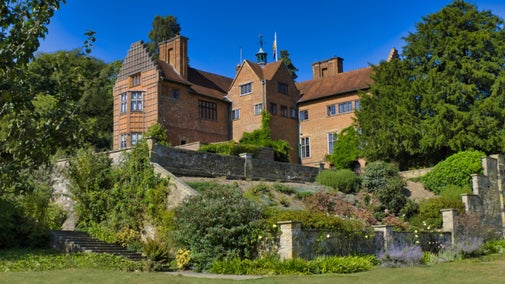
Keep the whole family busy with a visit to Chartwell. There's so much to see with 80 acres of grounds to explore and plenty of fun and games to discover including a two-storey treehouse in the woodlands. Come along for Christmas season fun including the family activity trail, Christmas fair of local stallholders, carol music, and decorations in the house and grounds.

Chartwell is a three pawprint rated place. Bring your four-legged friend along on a short lead for a stroll around the garden or go for a roam in the woods. Find out more about where you can and can't take your dog.

Find out what’s on at Chartwell and what to look out for next. From special tours and seasonal family trails to outdoor entertainment and Christmas events. Plus events coming up in 2026. Browse key dates for the diary and links to pre-book where tickets are required.
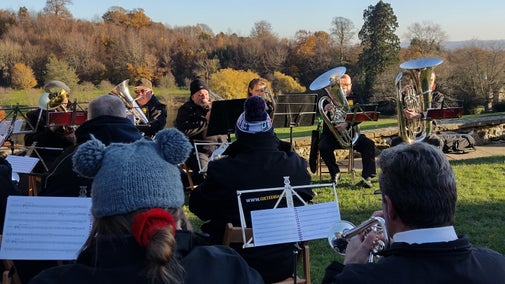
Find out about visiting Chartwell in Kent if you are disabled or need accessibility information, including visiting in a wheelchair, using the mobility bus as well as upcoming accessible events.
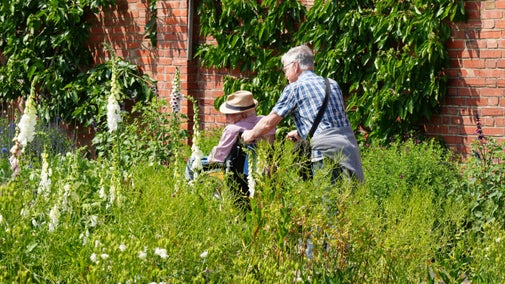
Groups are welcome throughout the year at Chartwell. Find out about what's available and how to book.

Bring your school along for a self-guided visit around the family home of Sir Winston Churchill.

Home of Sir Winston Churchill and his family. Filled with treasures, gifts and personal belongings, presented as they knew it.
Formal rose garden designed by Lady Churchill. Leads into the terrace lawn with views over surrounding estate and countryside.
Working kitchen garden, with walls built by Winston Churchill. Surrounded by apple orchard and wildflower meadow.
Wider woodland with estate walk around the lakes. Children’s play areas, including tree house, bomb crater and Canadian camp.
Home of the largest single collection of Winston Churchill’s paintings. Interactive displays offer insight into Churchill the painter.
Find visit information including tickets, children’s trails and walks. Watch our welcome video and pick up an audio guide.
Serves light lunches, one pot meals, cakes and bakes. Hot and cold drinks also available, plus ice cream in summer.
Seasonal National Trust ranges for home and garden, plants, local products, books and souvenirs.
From Christmas markets to live carol music, wreath-making workshops to a festive family garden trail, plus the beautifully decorated house to explore, there’s something for everyone to enjoy for Christmas 2025 at Chartwell. With so much to celebrate, you’ll want to come back to Chartwell again and again this holiday season.

With Chartwell snowed under and the Churchills stuck in London, it’s up to Jock and his animal friends to get everything ready for Christmas! Follow the trail and complete fun activities at each stop, from decorating trees to preparing Christmas dinner. Little ones will love spotting the animals and collecting stamps on their trail sheet along the way. The family activity trail runs 20 November–4 January (excluding Christmas Eve and Christmas Day). Trails cost £3.50 and include a prize. Normal admission applies.

Join one of our expert volunteer guides on a tour of selected rooms in the house at Chartwell which are decorated for Christmas, each with a different animal theme. Spaces are limited to 12 per tour to provide a more personal experience. Guided tours start before the house opens to other visitors on timed-entry, self-led visits. Upon arrival to the Chartwell Visitor Centre, you will need to buy a Garden and Studio ticket in addition to the pre-booked tour ticket. This will allow you to visit the gardens and studio after the tour. (Children under 5 do not need a ticket). Tours run Monday–Friday, 2–23 December 2025. Pre-booking is essential.
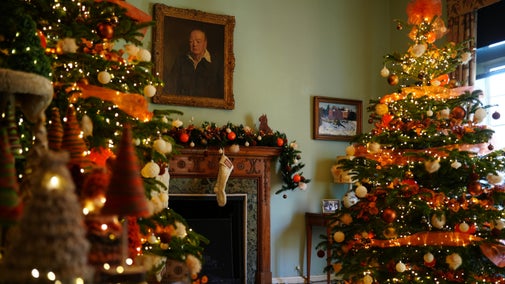
Broadcaster and author Clare Balding invites you and your beloved dog to join her for a winter walk at Chartwell on Monday 19 January 2026. Discover insights into her life in broadcasting and her Sunday Times bestselling debut novel 'Pastures New'. Tickets include a scenic walk with Clare Balding, a hot drink and a slice of cake, a copy of 'Pastures New', a Q&A and book signing, and natural dog treats from our partner, Forthglade. All proceeds from the event go directly to Chartwell, helping us continue our conservation work. Pre-booking essential.
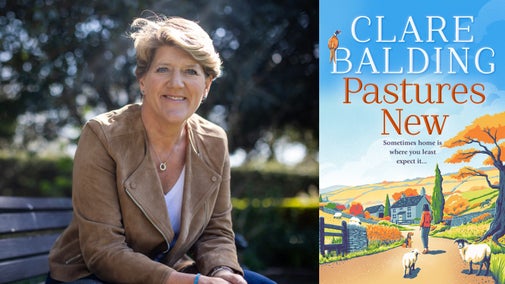
Enjoy the views that the Churchills chose Chartwell for, and explore the garden they created and loved, from Lady Churchill’s Rose Garden, to the Walled Garden Sir Winston helped build.

The studio contains the largest collection of Winston Churchill's paintings surrounding you as you enter. His paints are still laid out with a canvas waiting for completion.

Keep the whole family busy with a visit to Chartwell. There's so much to see with 80 acres of grounds to explore and plenty of fun and games to discover including a two-storey treehouse in the woodlands. Come along for Christmas season fun including the family activity trail, Christmas fair of local stallholders, carol music, and decorations in the house and grounds.

Chartwell’s estate and surrounding countryside offers far-reaching views across the Weald. Walk in the footsteps of one of our founders Octavia Hill when you explore Mariners Hill.
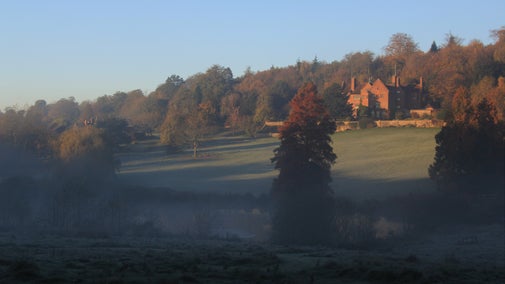
Discover the beloved home of one of Britain's greatest politicians, Sir Winston Churchill. The house has many treasures and provides an intimate portrait of the Churchill family.

A beautiful 3-hour walk that links Chartwell with Emmetts Garden. From daffodils and bluebells to roses and autumnal shades, enjoy a rainbow of colour throughout each month of the year as you walk through the West Kent countryside.

Enjoy a countryside walk in Kent, starting at the village of Westerham and finishing at Chartwell, Winston Churchill's family home.

Explore Mariners Hill and enjoy views of Winston Churchill's home at Chartwell and the Weald in Kent on this moderate circular walk.
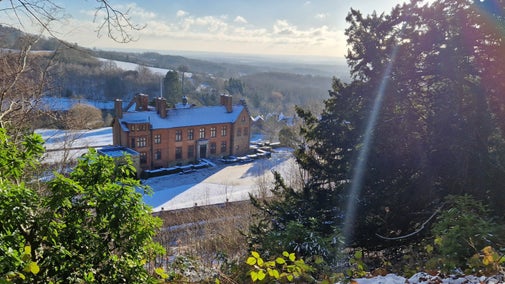
Explore Mariners Hill on this circular trail, which takes in fantastic views over Sir Winston Churchill's home at the Chartwell estate and the Weald of Kent.

From tasty treats and hot and cold dishes, to souvenirs, gifts and Churchill memorabilia, you'll be spoiled for choice in the Chartwell café and shop. Why not treat yourself?

Try the rich fruit cake recipe, crammed with juicy dried fruit, that was enjoyed by Winston Churchill, and created by one of his cooks.


A one-bedroom apartment in trademark Arts and Crafts style, on the second floor of Standen House.
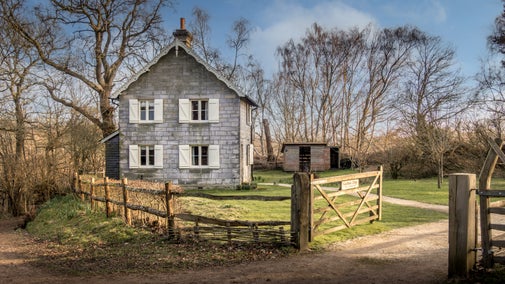
This gamekeeper’s cottage is surrounded by woodland on the Nymans estate.

Sitting on the edge of Sissinghurst Castle’s gardens, this is the perfect spot for garden lovers.

Immerse yourself in rolling farmland and peaceful countryside. This cosy cottage is the perfect getaway for friends and family.
Wrap up warm and explore Chartwell gardens this Christmas with our Family Trail!
Join one of our expert volunteer guides on a tour of selected rooms in the house at Chartwell which are decorated for Christmas, each with a different animal theme.
Experience the magic and wonder of Christmas, across our house and gardens, with lavishly decorated trees, shiny baubles, festive music, delightful projections and an array of enchanting animal-themed displays.
Enjoy live Christmas music in the grounds at Chartwell from a variety of musical groups performing on different dates throughout the festive season.
Broadcaster and author Clare Balding invites you and your beloved dog to join her for a winter walk at Chartwell.
Looking for your next adventure? Pop in for a cup of tea and a chat about volunteering.
Explore the restored Uniform Room and see Churchill's recently conserved clothing items in a special display.
This Easter, join the adventure! Follow the trail through our beautiful spring gardens, taking part in family games and challenges, rewarded with a chocolate egg.
Winston and Clementine Churchill bought Chartwell in 1922; it would be their family home for the next forty years.
Born in 1874 Churchill started his life as a soldier and journalist and travelled the world. He would go on to serve as Prime Minister twice, as a member of Parliament for over 60 years under five different monarchs and to lead Britain to victory in the Second World War. He lived an exceptionally long political life and is both a celebrated and contested figure.
He loved Chartwell. Here Churchill was a politician and statesman but also a husband, father, writer, painter and garden planner. It remained important to him until his death in 1965. The rooms in the house remain much as they were when he lived here, with pictures, books and personal mementoes while a special exhibition gives deeper insight into his life through 50 objects.
Chartwell’s hillside gardens reflect his love of landscape and nature. They include the lakes he created, the kitchen garden and the Marycot, a playhouse designed for his youngest daughter Mary. Beyond the gardens there is expansive woodland with looped trails and natural play areas, there is den building and a Canadian camp and opportunities to enjoy the outdoors.
The Trust’s story at Chartwell began whilst Winston Churchill and his family were still in residence. Discover how we helped to preserve a significant piece of British history.

Find out about Clementine Ogilvy Spencer-Churchill (née Hozier), a keen promoter of social and humanitarian causes, who was far more than just Sir Winston Churchill’s wife.

Roses have long been associated with the Churchills and their family home, Chartwell in Kent. The flower was a part of Winston and Clementine's love story from the very beginning.

Generations of ginger cats have lived at Chartwell over the years. Discover more about the resident cat called Jock VII and why he lives here.

There are thousands of significant collection items at Chartwell, each with their own story to tell. We’ve picked some highlights, including Churchill’s Nobel Prize and speech box

Discover more about the extraordinary life of Sir Winston Churchill in this permanent exhibition at Chartwell, including five must-see items from the curator.

You can flick through the signatures in the visitors book on the digitised book. They paint a picture of the Churchills' daily lives and the people they invited into their home.

Discover more about Churchill’s Chartwell appeal, a £7.1 million project to acquire over 1,000 of Churchill’s personal belongings which now have a permanent home at Chartwell.

The fruit and veg plots in the Walled Garden are a year-round hive of activity. From spring to winter, there's always something new growing, or being planted ready for next year.

A deep clean and essential conservation work is carried out room by room while the house is closed. Special care is taken look after every item, from skirting boards to chandeliers.

Find out about the behind-the-scenes work that goes into conserving parts of the garden at Chartwell, including a wildflower meadow, opening up views and flower border replanting

Discover the history of nurturing butterflies and bees at Chartwell, from Churchill’s passion for them to how we ensure we garden for them today.

The greenhouses have played an important role in gardening at Chartwell, and a project in 2018 saw them restored to become energy efficient and more sustainable.
Woodland clearing, tree veteranisation and nature surveys are just a few ways the countryside team work on the estate to improve it for the benefit of wildlife.

Volunteering is a rewarding way to get involved with your favourite place and make some new friends. Read some first-hand accounts of what it’s like to volunteer here.


Join today and help protect nature, beauty and history – for everyone, for ever. Enjoy access to more than 500 places with National Trust membership.
By sharing your email address you’re agreeing to receive marketing emails from the National Trust and confirm you’re 18 years old or over. Please see our for more information on how we look after your personal data.